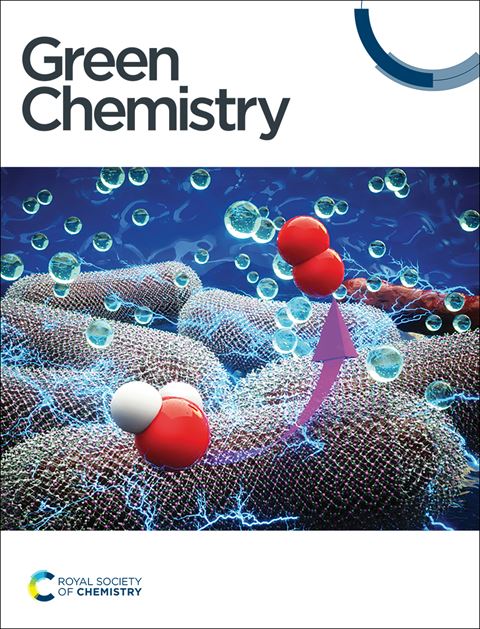Decarbonization approaches for ethylene production: comparative techno-economic and life-cycle analysis†
IF 9.3
1区 化学
Q1 CHEMISTRY, MULTIDISCIPLINARY
引用次数: 0
Abstract
Ethylene, a building block of the chemical industry, significantly contributes to global greenhouse gas (GHG) emissions, prompting interest in decarbonization approaches to align with recent carbon neutrality initiatives. This paper presents a comprehensive techno-economic analysis (TEA) and life cycle analysis (LCA) of GHG emissions, comparing conventional ethane-based ethylene plants with three decarbonization approaches. The study was conducted within the context of the U.S. average, with sensitivity analysis to identify key drivers affecting well-to-gate (WTG) GHG emissions and the levelized cost of ethylene (LCOE). The conventional plant exhibited a GHG emission of 869 kgCO2e per tonne-ethylene and a LCOE of $746 per tonne-ethylene. Substituting external natural gas fuels with grid or renewable electricity decreased the emissions to 806 and 717 kgCO2e per tonne-ethylene, respectively. The emissions of the grid-powered or renewable-powered electrically heated cracker that exports co-produced hydrogen to substitute conventional gray hydrogen were 1031 and −163 kgCO2e per tonne-ethylene, respectively. The application of CCS to purge gas showed 703 and 514 kgCO2e per tonne-ethylene emissions, respectively. The electric cracker showed lower emissions than the conventional plant below 380 kgCO2e per MW h electricity upstream, and at 60 kgCO2e per MW h, it achieved carbon neutrality. Regarding LCOE, when using a grid electricity source, no external natural gas, electric cracker, and adding CCS to purge gas showed $743, 833, and 771 per tonne-ethylene, respectively. When these plants adopt renewable electricity, their LCOEs will be $737, 746 and 757 per tonne-ethylene. Below $41.1 per MW h electricity price, the electric cracker had the lowest value among all cases. With hydrogen prices of $0.5–3.0 per kg-H2, the electric cracker's LCOE ranged from −$45(cost)–128(saving) per tonne-ethylene compared to the conventional concept.

求助全文
约1分钟内获得全文
求助全文
来源期刊

Green Chemistry
化学-化学综合
CiteScore
16.10
自引率
7.10%
发文量
677
审稿时长
1.4 months
期刊介绍:
Green Chemistry is a journal that provides a unique forum for the publication of innovative research on the development of alternative green and sustainable technologies. The scope of Green Chemistry is based on the definition proposed by Anastas and Warner (Green Chemistry: Theory and Practice, P T Anastas and J C Warner, Oxford University Press, Oxford, 1998), which defines green chemistry as the utilisation of a set of principles that reduces or eliminates the use or generation of hazardous substances in the design, manufacture and application of chemical products. Green Chemistry aims to reduce the environmental impact of the chemical enterprise by developing a technology base that is inherently non-toxic to living things and the environment. The journal welcomes submissions on all aspects of research relating to this endeavor and publishes original and significant cutting-edge research that is likely to be of wide general appeal. For a work to be published, it must present a significant advance in green chemistry, including a comparison with existing methods and a demonstration of advantages over those methods.
 求助内容:
求助内容: 应助结果提醒方式:
应助结果提醒方式:


